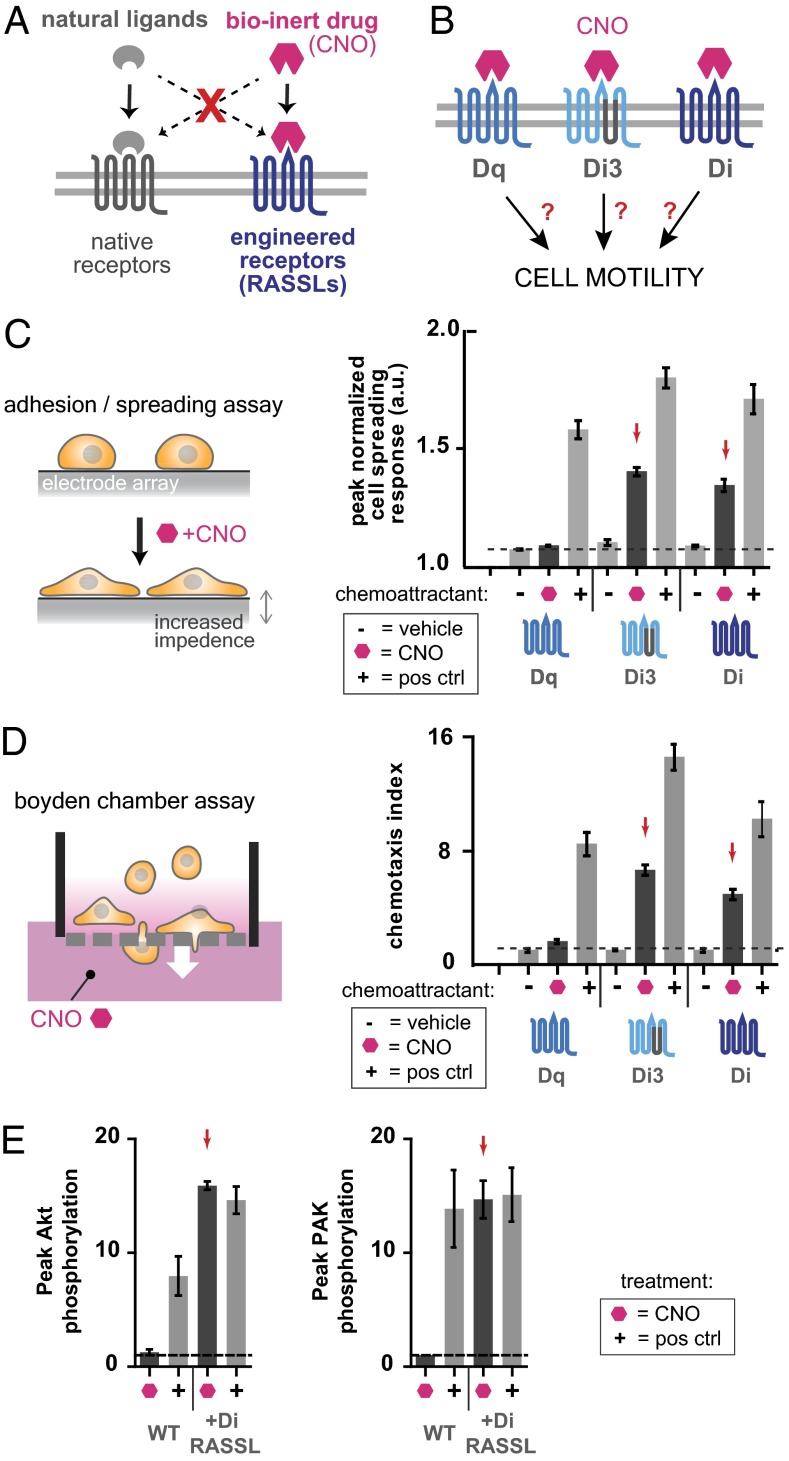Fig. 1.
Engineered Gαi-coupled GPCRs Di3 and Di mediate cytoskeletal changes and chemotaxis of HL-60 neutrophils in response to CNO. (A) RASSLs are engineered GPCRs that interact orthogonally with a bioinert small-molecule drug. Natural ligands do not interact with the engineered receptors, and the bioinert drug that activates the engineered receptors does not interact with native receptors. (B) We tested whether certain second-generation RASSLs known as DREADDs could mediate cell motility. (C) Changes in electrical impedance that result from cell spreading in response to drug or ligand are detected by an electrode array. HL-60 neutrophils transiently transfected to express engineered GPCRs were plated on fibronectin-coated impedance assay plates and stimulated with vehicle control, 100 nM fMLP (positive control chemoattractant) or 100 nM CNO. All cells responded to fMLP whereas only Di3- or Di-expressing cells responded to CNO. Mean ± SEM for n = 3 replicates is shown. (D) Cell migration of HL-60 neutrophils transiently transfected with engineered GPCRs was quantitated in a porous transwell Boyden-chamber assay. All cells migrated in response to fMLP whereas only Di3- or Di-expressing cells migrated in response to CNO. Drug concentrations used: 100 nM CNO, 100 nM fMLP. Mean ± SEM for n = 3 replicates is shown. (E) Polarization and cell migration in neutrophils involves Rac and PI3K activation. Di-expressing HL-60 neutrophils were treated with 100 nM fMLP or 100 nM CNO before immunoblotting for phosphorylated Akt and phosphorylated PAK as readouts for PI3K and Rac activity, respectively. Peak levels of phospho-Akt and phospho-PAK are shown for each condition. Both were increased by CNO stimulation in Di cells but not in control cells (P < 0.01 by Student t test). Stimulation with fMLP increased phospho-Akt and phospho-PAK levels in both Di and control cells (P < 0.01 by Student t test), but Di cells showed higher peak levels of phospho-Akt than did control cells (P < 0.01 by Student t test). Three (for CNO) or four (for fMLP) independent experiments were performed and mean ± SEM are shown.

